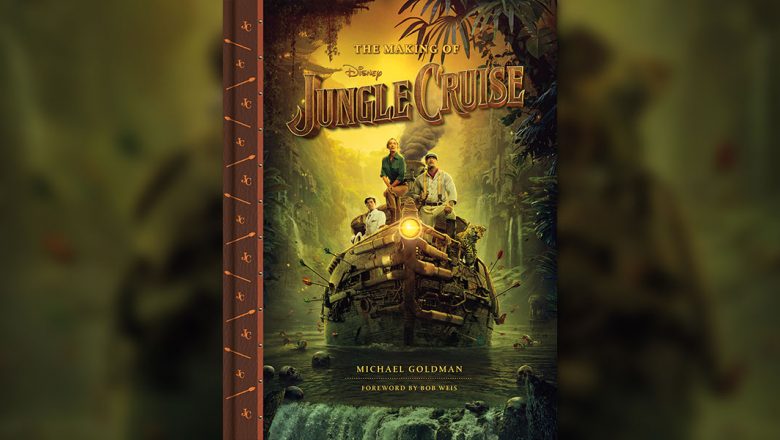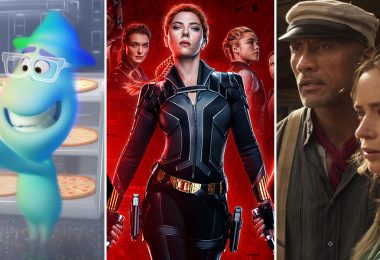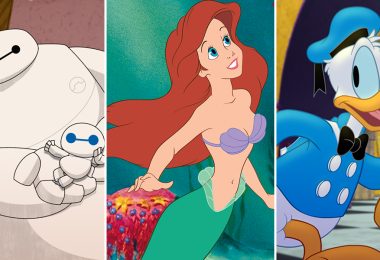By D23 Team
The world-famous Jungle Cruise has captured the hearts of Disney fans across the world. If you count yourself among the adventurous admirers of this Disney Parks classic who are also waiting with bated breath for the release of the film adaption Jungle Cruise, setting sail to theaters on July 24, you’ll want to grab a copy of The Making of Disney’s Jungle Cruise. This thrilling coffee table book chronicles the creation of both the film and attraction, sharing details, stories, and more that every fan will want to read. Before the book hits stores on June 9, we sat down with author Michael Goldman to uncover some of the secrets behind this must-read book.
D23: The Official Disney Fan Club: What is your personal connection to the Jungle Cruise attraction? When was the first time you rode it?
Michael Goldman (MG): My personal connection to the attraction is no more than anyone in our audience: I was and am a fan, having ridden Jungle Cruise since I was a child on more occasions than I can count. I can’t recall the first time, or what age I was, but—although this dates me—I can admit it was back in the era of paper tickets for the various attractions. I think it was an “E ticket” back then, but I can’t recall for sure.
As an aside, I will say as an adult, in my career, I am a journalist who covers the art, science, and people involved with feature filmmaking. I had covered multiple Pirates of the Caribbean films in the past and penned magazine articles on how they were shot and put together, and I always wondered why other attractions, most especially the Jungle Cruise, were not also transformed into feature film franchises. So I was familiar with the concept and understood the many challenges the filmmakers were undertaking at the time.
D23: This book dives into both the making of Jungle Cruise the film and the attraction. What was that like, diving into some of the history of the world-famous Jungle Cruise?
MG: Our big challenge up front was figuring out what kind of book to make. It soon became clear we couldn’t simply do a “making of” or “art” movie book when the subject matter was sprouting from one of the world’s great intellectual properties at the Disney theme parks. I was given a tour of Disneyland and went behind the scenes at the Jungle Cruise; met with various Imagineers at their Glendale, California, facility; and quickly learned about the rich history of the attraction, how it was originally the centerpiece of Disneyland and Walt’s own personal creation. The Imagineers were invaluable. I toured the Imagineering facility, was shown archival materials and photos from the attraction’s history, and regaled with stories from six or eight of them who generously devoted time.
Eventually, this allowed us to create a format of making the first half of the book about the history of the Jungle Cruise attraction: its expansion and evolution into other Disney parks, illustrating its cinematic flavor and style and details, and then segueing into how all this served as a foundation for the eventual feature film. And then, thanks to the help of the filmmakers, I was able to tell the story of the making of the movie, and how they were able to both pay homage to the original attraction and still create a new and original story that would appeal to modern movie audiences.
D23: What’s the coolest thing you learned about the making of the attraction?
MG: A lot of great stuff, but for me, I was most fascinated with learning the details and history of the original Jungle Cruise attraction’s physical, living jungle—the “ecosystem” that was essentially created by famed Disney landscaper Bill Evans starting in the 1950s. Bill was basically a genius when it came to plants of all types; and his accomplishment in planting trees and other plants at the site in such a way that a real, albeit miniature, ecosystem could form and grow and evolve to this very day, was remarkable.
I make the point in the book that originally, Walt Disney had hoped to have live animals populate the attraction. That proved at the time to be impractical due to the nocturnal habits of the creatures involved, and they came up with the Audio-Animatronics® approach instead, which has grown and evolved over the years. But the decision to plant, grow, maintain, improve, and lovingly nurture a ‘real jungle’ in Anaheim, California, of all places, was a stroke of real genius, because it made the experience a real cruise through a real jungle, as it were.
D23: In your opinion, why do you think the Jungle Cruise is such a beloved attraction?
MG: Lots of reasons. Among them are its size and scope as the actual centerpiece of Adventureland and a bedrock foundation of Disneyland itself. But beyond that, the evolution of the attraction to make the skippers the stars with their often ridiculous puns and jokes was another stroke of genius. That ensured the experience is NOT the same every time. It depends when you go, what boat you jump into, which skipper you get, is it day or night or a holiday, and so on. And beyond that, the fact that the attraction makes the guests the ‘stars’ as they sit in the boats and view the sights makes it a much different experience than, say, watching something on a big screen. And, of course, there is the fact that the craftsmanship is so high—both the landscaping and the Audio Animatronics® and the set designs and execution. As one of the Imagineers told me, which I relate in the book, all these factors make the attraction sort of the first (unofficial) ‘interactive’ ride in the world, in a manner of speaking.
D23: What was the most surprising thing you learned about the making of the film while writing this book?
MG: There were several things that blew me away, so it is hard to pick one. The production design and the effort taken to design and build the port town of Porto Velho was far beyond what is normal on such films. Likewise, the attention paid to designing era- and culturally appropriate props, hair, and makeup was amazing. The construction of the tramp steamer boat, La Quila, the home to Dwayne Johnson’s character, Frank, was a massive logistical achievement. And then there were the complex visual effects, particularly the state-of-the-art digital work used to create the ferocious jaguar Proxima, and to put a supernatural vibe on the conquistador characters who have been trapped in the jungle for a very long time.
But possibly the craziest thing I learned regarded the helpful role played by a goat named Larry. Yes, you heard me right: a goat named Larry. In Atlanta, at a location called the Old Atlanta Prison Farm, filmmakers had to clear brush that had become way overgrown from a certain part of the location. To have it stand in for a portion of the jungle that required them to bring in jungle-appropriate plants to take the place of the brush, and to give them access to two small water ponds on the site, they had to clear out existing brush. The location manager, Maida Morgan, explained to me that for about two weeks, they had a herd of live goats simply eat away at the brush that prevented them from accessing the ponds on the site. Larry, according to Maida Morgan, was a very special goat who could actually stand on his hind legs and walk like a human. She insisted that he was particularly helpful in helping them reach and remove plants and vines that were located particularly high up. So a big shout-out to Larry the Hind-Walking Goat!!!
Preorder your copy of The Making of Disney’s Jungle Cruise here.





